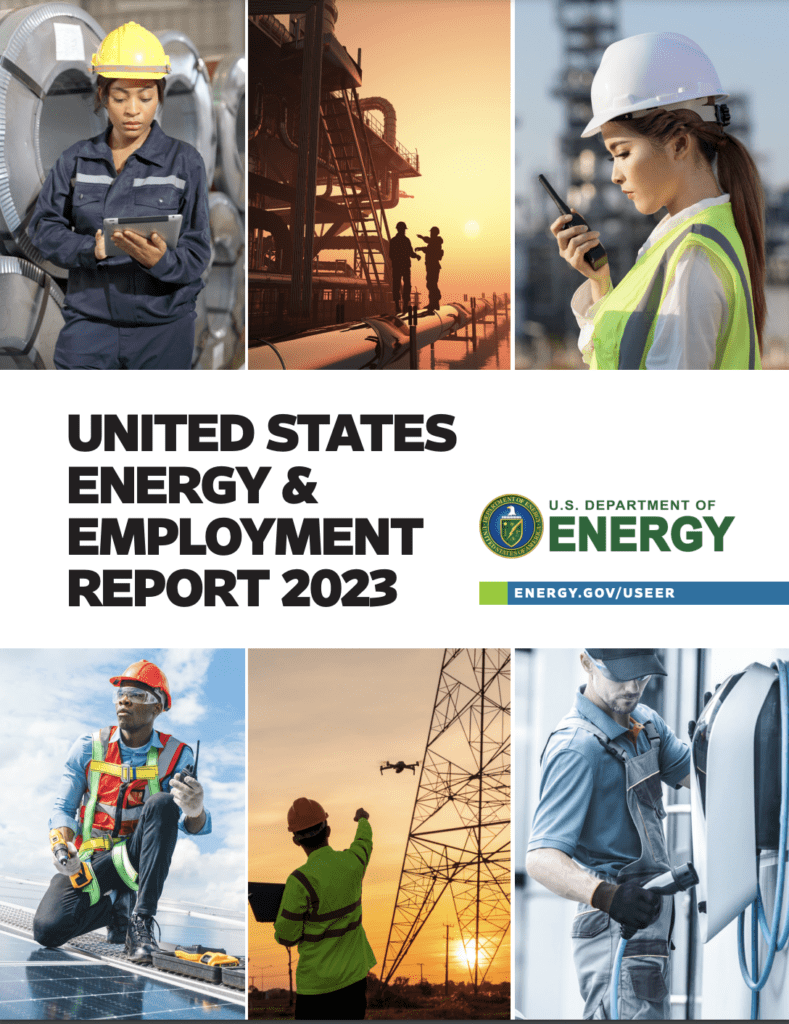Resource Library
DOE: U.S. Energy & Employment Jobs Report (USEER)
Overview
DOE reported the latest labor trends in the U.S. energy sector. Among the findings:
⚡️ Energy jobs outpaced U.S. employment
? Clean energy jobs grew in every state
? EV jobs grew 27% last year
Quick Links

The U.S. Department of Energy (DOE) released the 2023 U.S. Energy and Employment Report
(USEER) — a comprehensive study designed to track and understand employment trends within
key energy technologies. As the private sector continues to announce major investments in
American-made energy, the 2023 USEER shows that the energy workforce added almost 300,000 jobs (+3.8% growth).
Clean energy jobs increased in every state and grew 3.9% nationally. Clean energy technologies,
such as solar and wind, accounted for more than 84% of net new electric power generation jobs,
adding over 21,000 jobs (+3.6% growth), and zero emissions vehicles saw nearly 21% growth,
adding over 38,000 jobs. In achieving the President’s goal of 100% clean electricity by 2035 and
a net zero economy by 2050, energy jobs are expected to grow across the nation.
